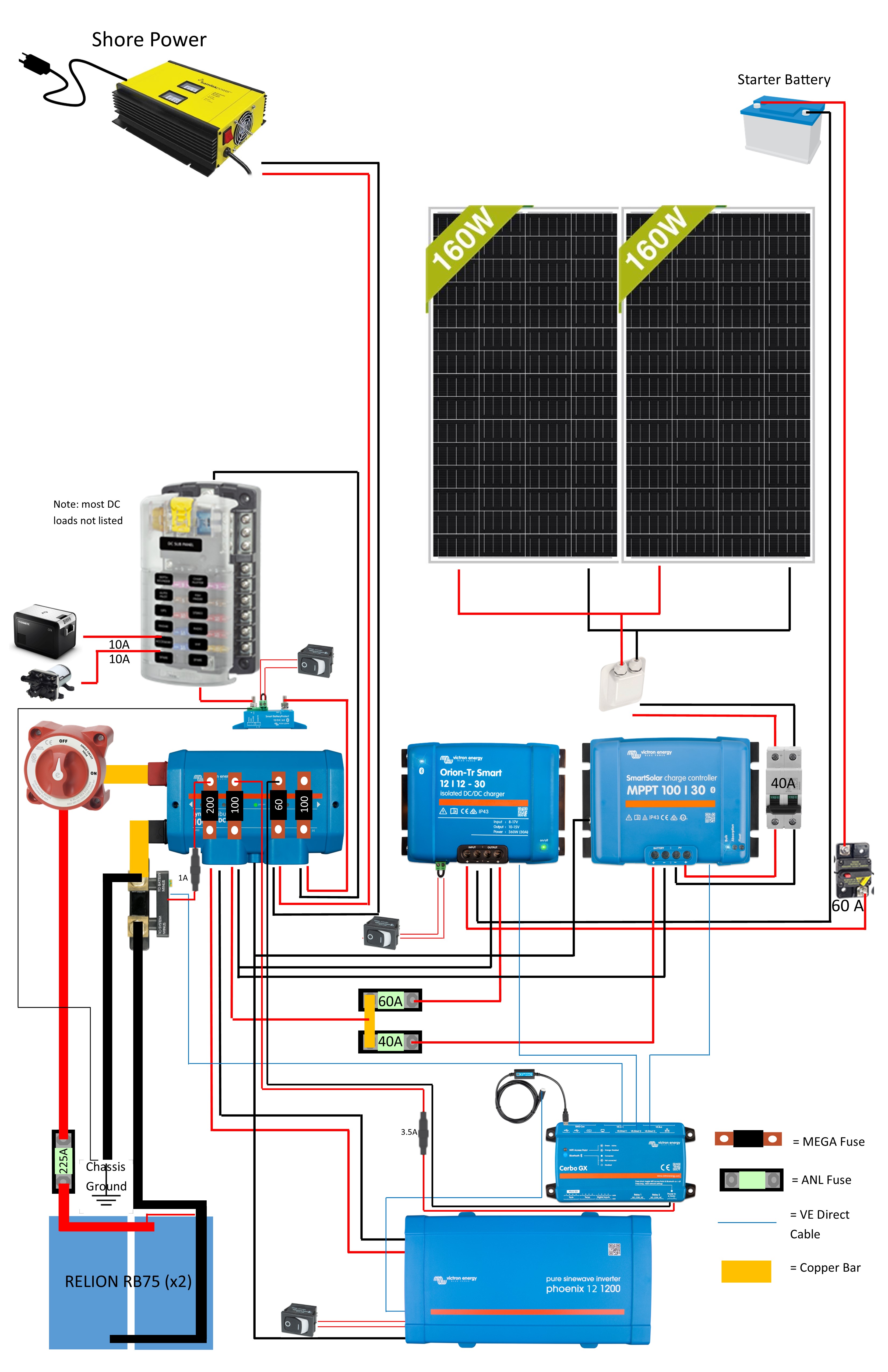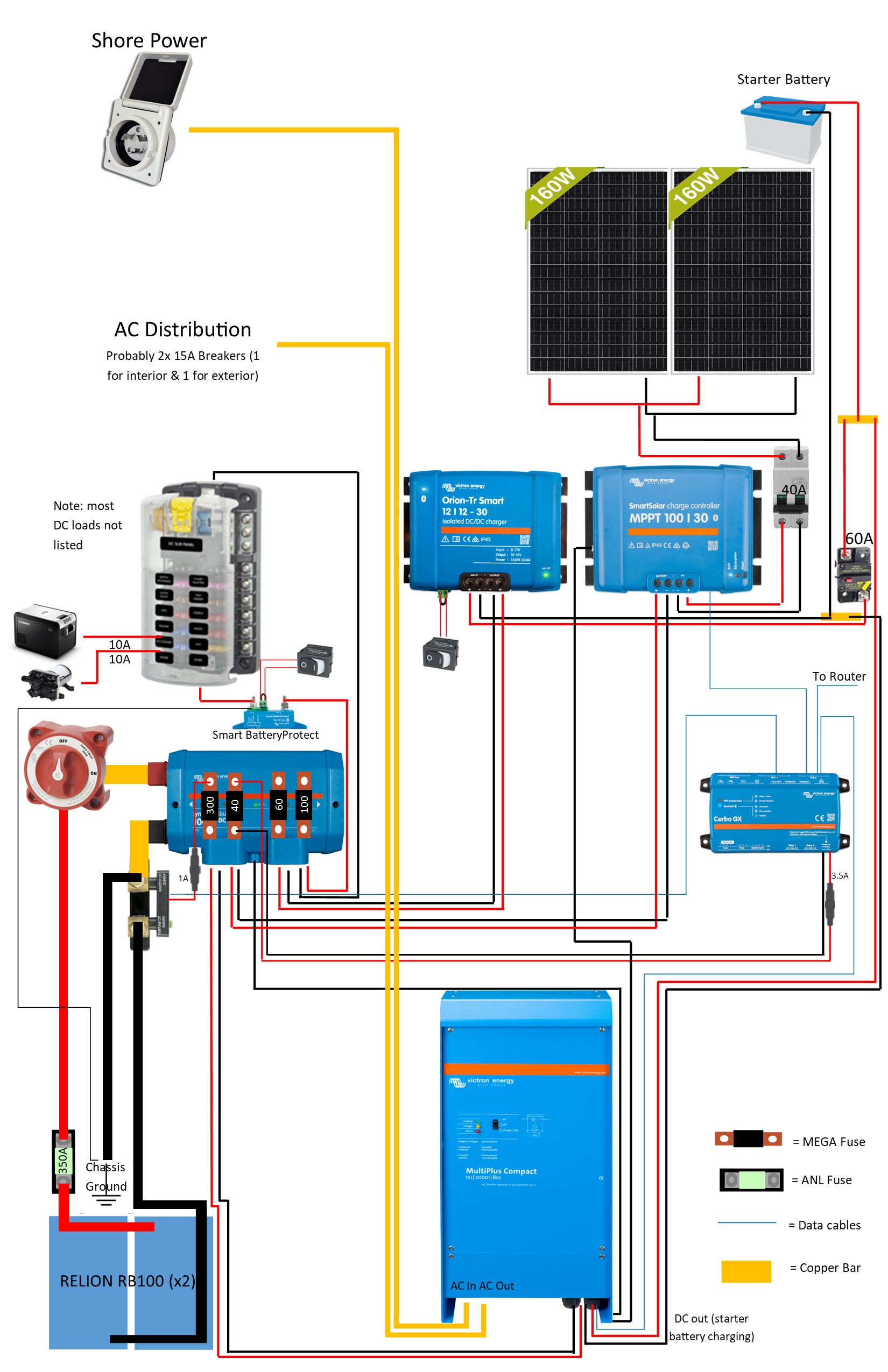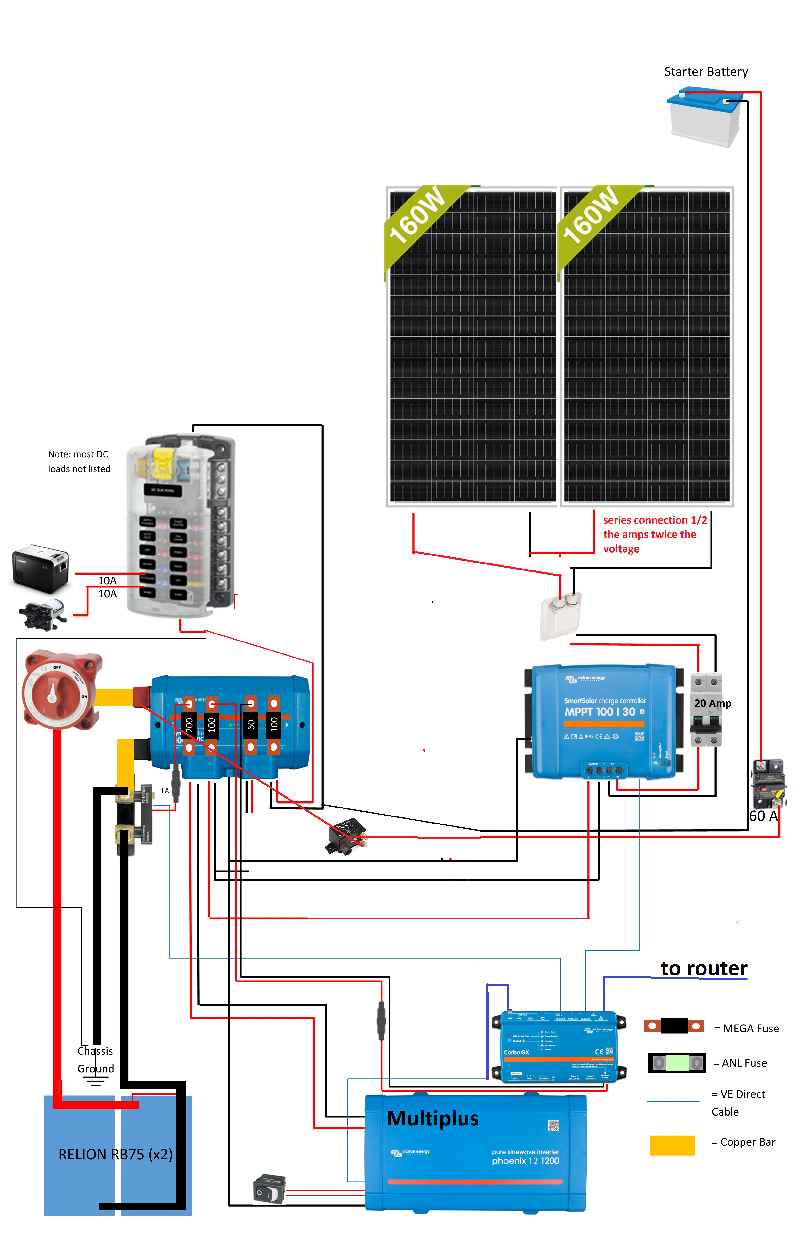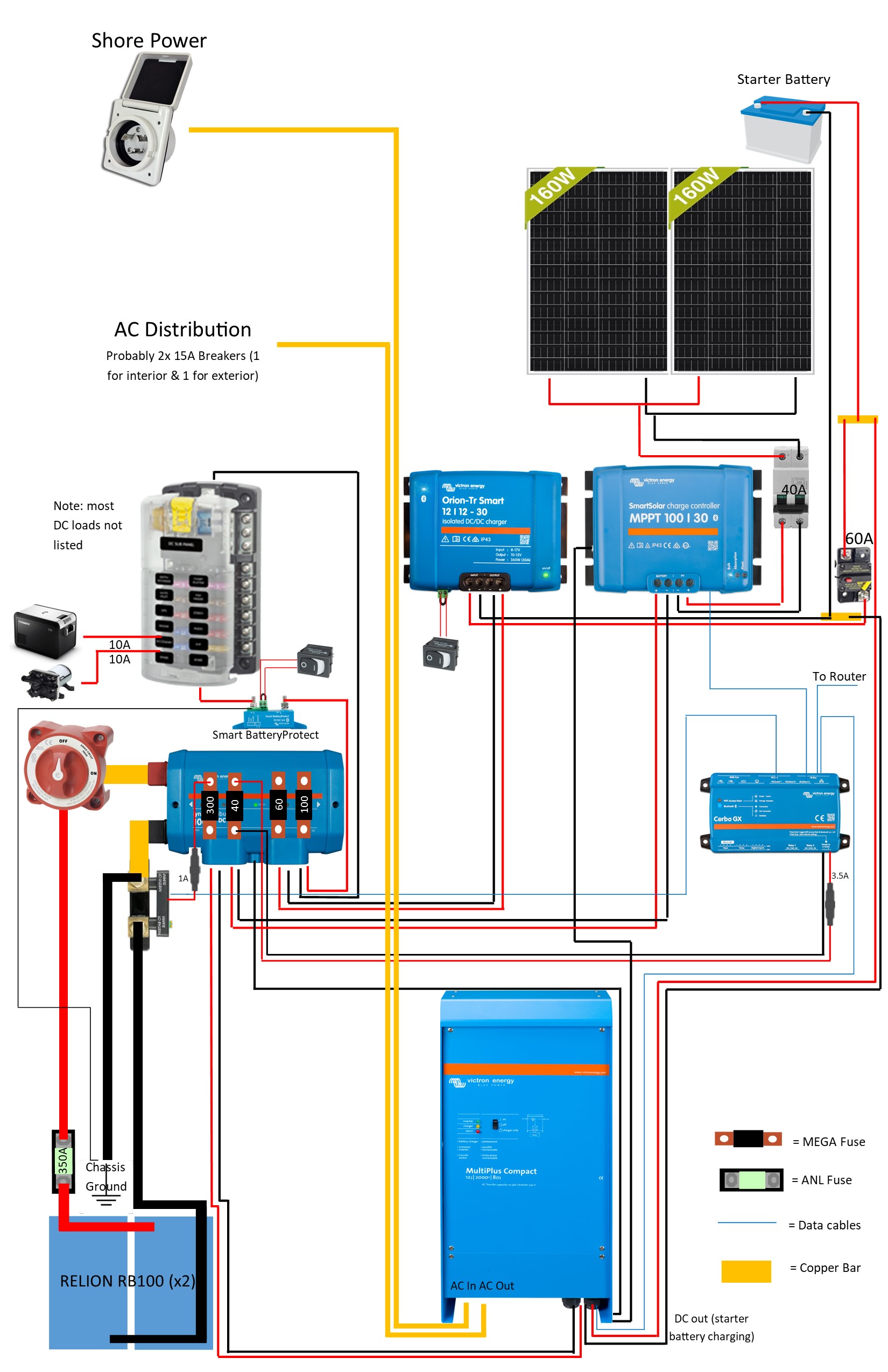UPDATE 5/11/2021: Please see the updated wiring diagram below with a Multiplus and larger batteries.
Hi all. I've created a wiring diagram for the electrical system I am going to install in my vehicle. After sending it to a few friends for feedback, I figured it would be a good idea to try and get some feedback from people who may know more about the Victron hardware specifically.
The batteries shown in the diagram are 2x Relion RB75, but I am considering going with RB100's to have more of a buffer.
If it makes any difference, this is going in an SUV (Ford Expedition EL)
One thing I've been trying to find is a different shore charger with a charging profile specifically for lithium (not a Multiplus, too expensive). This Samlex charger only has lead-acid profiles, which the Relion batteries accept but I figured lithium specific is better.
The system is fused for more power than the batteries can deliver (I think), but I will never be using anywhere near that much so it is a non issue.
Thanks

UPDATED WIRING DIAGRAM (5/11/2021)



